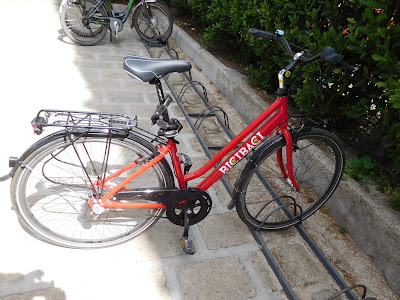There was a time, about ten or fifteen years ago, when it seemed that every other urban and suburban bicycle shop was trying to be a "bicycle boutique". There are still shops like that, though, it seems, not as many as there were in those days: I guess folks who can afford such places don't have the time to go to them, so they shop online.
The "boutiques" did everything they could not to seem like bike shops. If anything, some of them tried to look and feel like the sorts of gyms young people with lots of disposable income frequent in order to meet other young people with lots of disposable income. Or they tried to look like the sorts of coffee bars that try to be like Starbucks without being Starbucks.
There's a certain kind of atmosphere, though, that simply can't be achieved merely with track lighting and espresso machines. Those things simply can't match a great entrance:
Some things, you can only find in Italy--Florence, to be specific.
The "boutiques" did everything they could not to seem like bike shops. If anything, some of them tried to look and feel like the sorts of gyms young people with lots of disposable income frequent in order to meet other young people with lots of disposable income. Or they tried to look like the sorts of coffee bars that try to be like Starbucks without being Starbucks.
There's a certain kind of atmosphere, though, that simply can't be achieved merely with track lighting and espresso machines. Those things simply can't match a great entrance:
Some things, you can only find in Italy--Florence, to be specific.

































